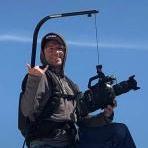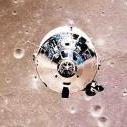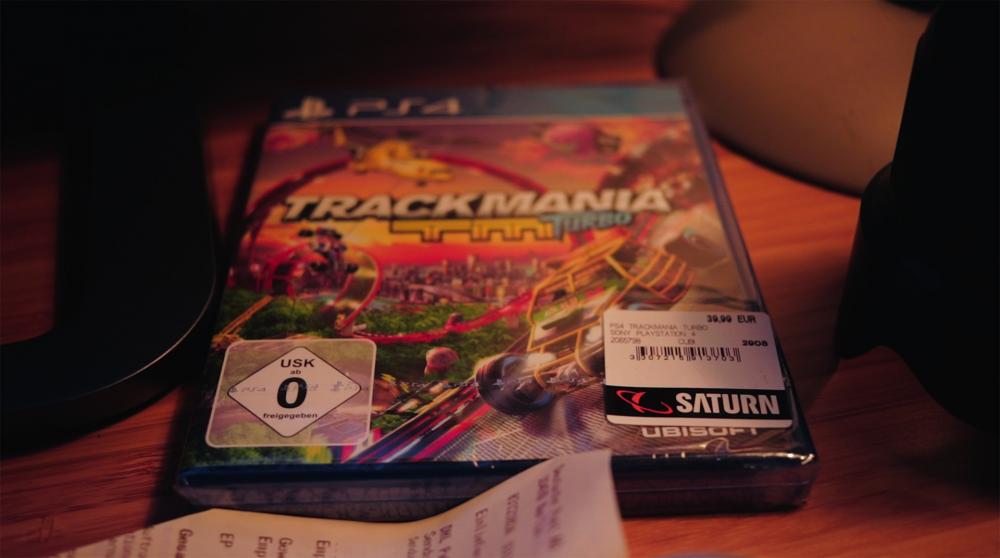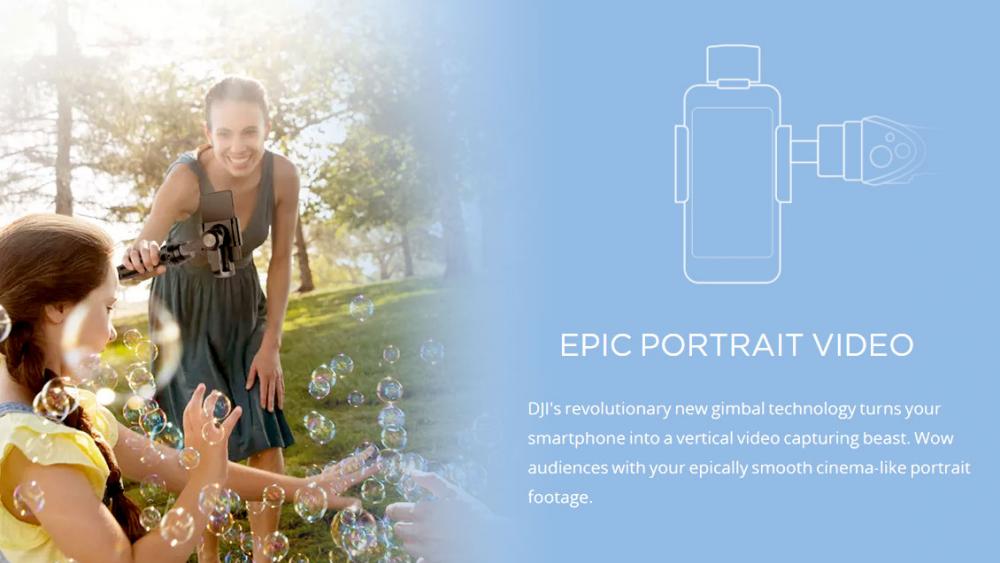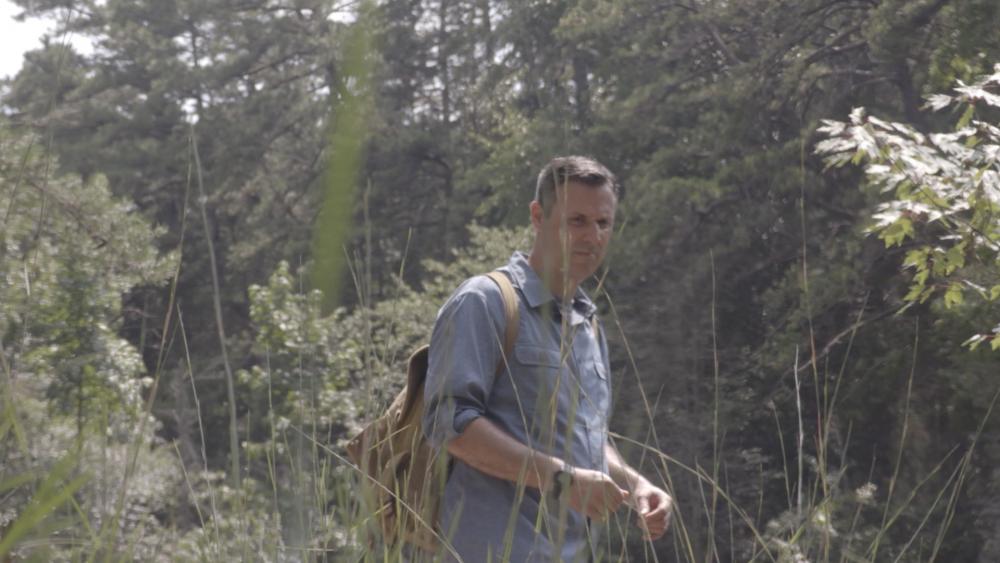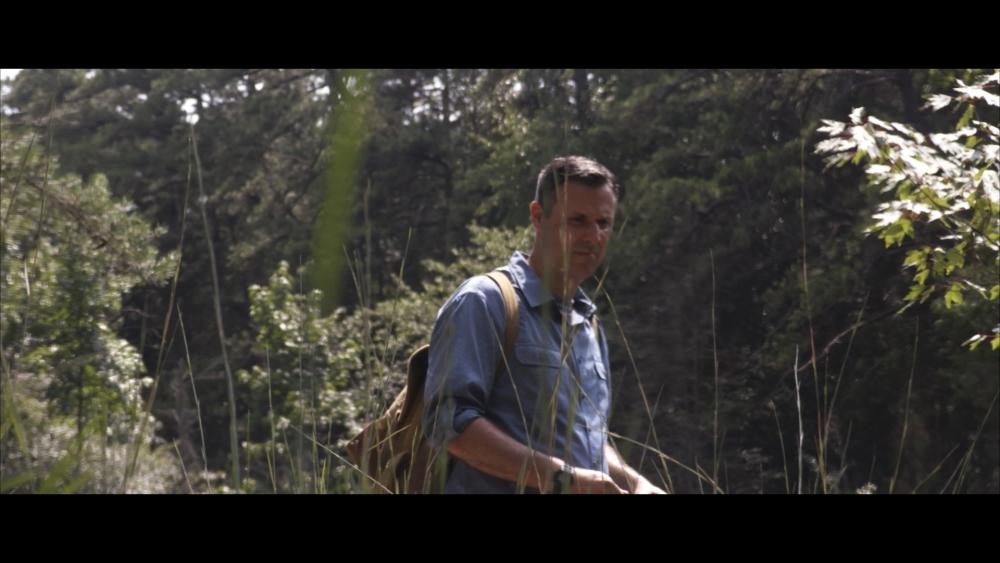Leaderboard
Popular Content
Showing content with the highest reputation on 09/06/2016 in all areas
-

Film Convert Is Dead!
Xavier Plagaro Mussard and 3 others reacted to kaylee for a topic
ive given this a lot of thought, and, imho: film grain, as we know it, adds a lot to a certain kind of motion picture filmmaking. would it add a lot to gopro drone footage of a beach? no, and heres why youre looking at the beach. watching a movie is like looking though a window as opposed to looking at a window a huge amount of narrative filmmaking is just footage of people talking. when we experience a conversation in real life, we dont look AT the person we're talking to the same way we look AT the beach video. this is one of the reasons that super shallow depth of field can be effective – im not looking at the tip of your nose while im talking to you. scott mccloud explains it like this film grain provides a visually soothing abstraction of reality that is particularly useful for movies where people are talking to each other for 2 hours. its organic rhythm gives us a sort of translucent repeating pattern to look through that we perceive on a conscious as well as an unconscious level. it relaxes us, to listen to a story – its subliminal; hypnotic. and it feels more like real life when we're interacting with people, as illustrated above although film grain is great at doing all this, what im describing should apply to any kind of subtle pattern noise – which is something im going to experiment with. im not suggesting that a film image is empirically better than a noiseless alexa image, but for reservoir dogs, i think it is. a new purely digital patterned noise that does not seek to emulate film grain would prolly work pretty well too – as long as its not distracting or hideous, obviously. id like to develop that idea and now, back to your regularly scheduled programming4 points -

Film Convert Is Dead!
User and 2 others reacted to Lintelfilm for a topic
Oh the usual internet stuff: I'm right, you're wrong. I need to make sure you and all the other users here know that. I will not give up responding to your responses until it is clear to everyone here that you are an awful human being and my powers of intellect are superior to yours. This conversation is so important it'll occupy a good portion of my day. There are children getting bombed in Syria right now but someone with a random name on a very specialist hobbyist forum about something completely meaningless has a different opinion to me about it and he dared to answer back when I pointed out he was WRONG. Oh so wrong. Everyone is wrong. Listen to me I'm the best. My camera is best. No wait actually let's make this personal - your films are rubbish mine are great. Your existence is less valid than mine. Give up filmmaking! You know nothing! Hang your head in shame, fiend! Be gone! Actually no please stay I regret my outburst you are lovely. I love you. I love everyone here. I love everything. I love pretend film grain. I even love video without grain!3 points -

Canon 1D X Mark II user reports and 4K crop
giannis_ch and 2 others reacted to Andrew Reid for a topic
It's a possibility. GammaDR is barely even flat let alone LOG and when you dial things down flatter in-camera, colour goes a bit haywire. So what I did with the NX1 Guide LOG converter is find a balance between delivering maximum dynamic range from the in-camera non-flat file (there are various tricks and it is important for example not to accidentally clip the RGB range in post with the H.265 files) and maintaining the great colour the NX1 is known for. Then this image gets converted by my LOG LUT in post to a much flatter image which is compatible with the usual range of LUTs designed for S-LOG, Canon LOG, etc. Samsung don't have an advanced app like Canon for creating your own gamma curves and colour profiles. Maybe the hacker community can make one. But it remains such an incredibly powerful piece of hardware with a very simple user interface and great physical ergonomics. It is still cutting edge. That sensor seems to be doing a very nice readout in 120fps to get that much detail in 1080p. Oh and rolling shutter in 1080p is practically zero. The only weak point is that you have to avoid pushing past ISO 800. Keep it at 100-800 and it is super clean. Past that is emergencies only especially if shooting 100fps or 120fps. I think aside from the low light capabilities and Dual Pixel AF of the 1D X Mark II the NX1 is my slow-mo camera of choice right now. Sometimes even the video AF-C of the camera with the premium S lenses actually works pretty damn well!3 points -
2 points
-

Canon 80D first impressions and 3x crop mode
Shield3 and one other reacted to Curtis Ross for a topic
This is the story of canon. They come out with cameras, people bash the specs. But they are GREAT to use in the REAL world... Just saying....2 points -
Nice stuff hempo, is your zeiss modified for super 16? That lens and wide angle adapter is a nice piece of kit!! Would love to film with a digital bolex and some of my 16mm glass one day. I was looking at used D16s right before the company stopped producing cameras and have been having trouble finding any used listings. Here's a short I just shot with the Angenieux 15-150 on a GH42 points
-
You're blind if m43/aps-c are almost equal. It's improving over previous generations, but so are larger sensors. There will always be a DR gap. Same with FF vs aps-c. https://***URL removed***/reviews/image-comparison/fullscreen?attr144_0=panasonic_dmcgx85&attr144_1=sony_a6300&attr144_2=nikon_d7200&attr144_3=sony_dscrx100m4&attr146_0=200_4&attr146_1=100_4&attr146_2=100_4&attr146_3=125_5&attr177_0=off&attr177_1=off&attr177_2=off&attr177_3=off&normalization=compare&widget=351&x=0.13161460498548422&y=0.98162569778095822 points
-
I suspect the look of film is too in-grained (weak pun intended) for everyone to agree on that, but its an interesting point. Emulating film is why Arri are still in business after over 100 years and why most modern cinema cameras are continually trying to emulate the characteristics of film negative derived from an optical process. Digital noise in many cameras is still judged by how 'grain-like' it appears. Post process of log and raw images are treated with tools that were built to mimic photochemical behaviour of stock emulsion/print process and chemical bath treatments...all focused on making digital images more relatable to work with and for audiences to accept the look of. It's proof that film is still regarded as the 'gold standard' for digital imagery to aspire too...sometimes including its grainy warts it seems. But modern cinema is already at a point where 360 degree shutter, rolling shutter, HFR have crept into modern filmmaking - things that could be regarded as completely non-filmic aesthetics by traditional standards...but the cinematic language has a history of changing...so yes - grain will most probably be eliminated from movies eventually and be considered an unwanted artefact of an 'antiquated' format. Its implementation as an easthetic choice for digital is sometimes subjective but the only bad online examples I've seen are from people who don't seem to understand the basics of colour correction and grading let alone the advantage that denoise and grain treatments can offer.2 points
-
Film Convert Is Dead!
John Matthews and one other reacted to Inazuma for a topic
To each their own really. But there are some technical benefits to adding grain, like how it can sometimes help prevent blockiness and banding from youtube/vimeo compression2 points -
Film Convert Is Dead!
kidzrevil and one other reacted to BrorSvensson for a topic
It also works great with camera like the Sony a7 or the T3i which have issues like moire and aliasing, the grain often helps hide those issues in my experience.2 points -

Canon 1D X Mark II user reports and 4K crop
Marco Tecno and one other reacted to Andrew Reid for a topic
I am getting some lovely results with 120FPS on the hacked Samsung NX1. Latest firmware and the increased bitrates of the hack have done wonders for it since the NX1 first came out. It is much more detailed than the 1D X Mark II 120fps and whips the ass of the mushy A7S II 120fps at a fraction of the cost!! And full Super 35mm field of view! Just make sure to turn sharpness all the way down in-camera. Hacked NX1 1080/120p in terms of moire and aliasing is similar to X Pro 2 1080p maybe a bit cleaner.2 points -

Canon 80D first impressions and 3x crop mode
kaylee reacted to Andrew Reid for a topic
I have been trying out the EOSHD C-LOG and Film Profiles pack on a few other cameras, and came across a cheap 80D today. Installed a few of the profiles on the camera in-store and boom - MASSIVE improvement. So the camera I said I'd never buy is going to get a review after all! Hmm these words are tasty! Right now in my bag I am shooting with the 1D C, NX1 and now 80D. Let's look at how these compliment each other, because after all I'd rather just carry one camera in an ideal world - NX1 is in there for the 1080p 120fps. This used to be a bit pants. But subsequent Samsung firmware updates and now the bitrate hack means I get sharp, detailed 120fps at 160Mbit (equivalent in quality to approx. 300Mbit H.264). This camera continues to astound me. 1D C is in there for the sheer brute image quality and full frame goodness, both in 4K video mode and as my main stills camera. I am even starting to warm to the full frame 1080/24p image again because of my Film Profiles. This camera already has Canon LOG but it is immensely satisfying to carry my own pre-graded no-hassle looks around with me and see instantly what the finished shot is going to look like, in cinematic full-frame-o-vision. Also the JPEGs not just the MOVs. 80D is in there for many more reasons of where it is strong than where it is weaker. The camera is surprising me. First the size and weight - it is my travel camera when I can't risk the 1D C or don't want to lug it. It is my crop sensor camera when I need a good quality zoom but don't want to lug around a full frame 24-105 or 24-70mm F2.8. I have the Sigma 18-35mm F1.8 and love to make use of it, I have the Canon 18-135mm and despite it not being a super fast aperture zoom, it is light and gives a fantastic range with a cinematic image + fantastic stabilisation. The Canon 24-70mm F2.8 II lovely though it is on the 1D C does not have the range, stabilisation or small size. I sold it and now just use primes on my full frame camera. The main reason however for adding the 80D to the bag is for the Dual Pixel AF and articulated screen. This makes the 80D a much better run & gun choice than the 1D C. When it is slow tripod based lock-down art shots I select the 1D C. When it is documentary, camera movement, quicker pace of shooting the 80D can 'get the shot' much better. I have not yet felt justifiable the 6000 euros for a 1D X Mark II so the 80D at 1/6th of that for the same Dual Pixel AF performance and an articulated screen allows me to 'live without' 4K for now. Now to image quality. The 1080p of course could be better, this is Canon after all. But the skintones, colour science, codec, rolling shutter performance and low light are all very nice indeed - much better than most of the 4K cameras out there in fact and much better than Sony. The image upscales well to 4K on my LG DCI 4096 x 2160 display. In fact overall detail appears much higher than any Canon DSLR before it, way better than the 60D and 70D. It looks like the GH2 on many shots especially those at closer focus distances. Check out the 1080p frame grab below. It is much better than when I first tried the camera, maybe Canon did a tweak. Shot in C-LOG, graded with EOSHD CINE LUT 1: The 60p seems as highly detailed as the 24p. Just a shame about the aliasing and the moire can still rear up and bite you, but overall the image is very satisfying when the conditions are right to use it. And if it means getting the shot vs not, then this justifies the 80D's existence. The stills are superb - fantastic dynamic range, resolution and colour, can barely tell it apart from full frame for the most part. Now a surprise The 3x crop mode with 1:1 sensor output (full pixel output of a cropped region) delivers absolutely superb image quality with no moire or aliasing. Wrap up The whole usability seems refined, a very nice sense of ergonomics and straight-forwardness. Touch screen for Dual Pixel AF works superbly. Build quality could be better, it doesn't feel as solid as a Nikon D7200 for the price point. Dual Pixel AF is very quiet for the most part and flawless, especially with the STM lenses. Enjoying the 24mm F2.8 EF-S pancake. The C-LOG image grades superbly. It's a good codec on there even in 60p.1 point -
I know the Zoom line has pretty much become the go-to recorder for prosumers, and even a lot of pros, but the preamps on these units have always been disappointing imho. Then again I'm looking at capturing audio that sounds great as part of a larger visual/soundscape and equally as great solo for radio broadcast where there's nowhere to hide. I still recommend the Marantz pmd661. Its amps are way better than the Zoom line, the sound is broadcast quality level, but it isn't as big or expensive as one of the Sound Devices units.1 point
-
GH5 10-bit 4:2:2 internal?
Marco Tecno reacted to The Chris for a topic
I picked top end m43/aps-c (Sony, Nikon) and just for shits I threw in the RX100. Guess which one the m43 is closest to? Unless your vision sucks too, it's the 1" sensor, not aps-c. If you use the d810 or the a7r/II the difference is wider. Picking an old Canon is a waste of time. But my point is easily made, the difference is easy to see, not "almost indistinguishable" as the poster spewing bullshit hyperbole said. But to use your example, which camera is better at high ISO? Hint, it's not the GH4. So your point is bunk as well.1 point -
Film vs Digital: The Big Debate
TwoScoops reacted to zerocool22 for a topic
I disagree, before I knew anything about camera's or filmmaking I was somebody from the audience, and I could always tell if the movie looked bad or not. When the first digital films came out, I just hated the look. I didnt even knew it was digital back then, I just thought It just doesnt look good. (years later, I can tell you it was the lack of high DR, highlights were overexposed, the image was too sharp, stuff that I didnt was used too before). Ok I was a more serious film enthousiast then your average cinema visitor. But there are millions like me out there, and its those serious film enthousiast who still make a difference in cinema sales & DVD purchases.1 point -
Canon 80D first impressions and 3x crop mode
Lintelfilm reacted to Inazuma for a topic
It's not an STM lens but it's still very quiet. Only noticeable in a quiet room. You can feel a slight vibration whenever the focus changes, which I actually found quite reassuring of focus confirmation when I was using it.1 point -
I think what I have to get away from is the "fix it in post" mentality. I actually prefer a clean image right off the camera. I have to stop shooting in S-log on my A7r 2, every time I use it I just don't need it. Normal audiences DO NOT CARE about a "film - like" image and I have to constantly remind myself of this fact.1 point
-

Canon 80D first impressions and 3x crop mode
mercer reacted to Lintelfilm for a topic
DPAF works really great with the Sigma ART zooms - Sigma have now optimised them specifically for it (I don't know if the 17-50mm 2.8 is though - the 18-35mm didn't used to be optimised but they updated the firmware). However unlike the STM lenses they focus very quickly and are quite noisy. If you're looking to invest in Canon for the DPAF I suggest sticking with Canon lenses mainly. @Inazuma how noisy is the Canon 17-55 2.8 with DPAF on the C100MKII?1 point -
I don't know, the Canon 17-55 was the only lens I used on it. I know @Lintelfilm uses the sigma 18-35 and 50-100 tho. Maybe he can tell you.1 point
-
Well, as-they-say... "ignorance is bliss". If you are happy with what you have, stop reading here. Curious about all the various theories, I just did an extreme quickie test, hand-holding both a Canon-FD 135mm, and then the Lumix 14-140 zoom at about 135mm, With the E-stabilization on, there was a sudden glitch: when holding the camera very steady, propped on a window ledge, the e-stablization caused a kind of sudden delerium-tremors. Strangely enough, as long as there was some minimum panning, it was ok, but when the image was steadiest, the E-stabilization seemed to freak out. This did not happen when the E-stabilization was turned off. Agreed, this is an extreme case: how often would you try to hand-hold 135mm, but there you have it. The potential for "artifacts" with the E-stabilzation are definitely there, where it was not a problem without e-stabilization. I will try to post the quickie test tomorrow.1 point
-
Cooke Optics introduces multiple mounts for miniS4/i lens range
Marco Bentz reacted to AKH for a topic
For those who haven't seen this yet, and have a large enough bank balance: http://www.cookeoptics.co.uk/u/news.html?Open&v=99&c=2&y=99&d=928A82023974CE1A85258020005E39721 point -
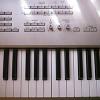
Free Music Resource
Geoff CB reacted to Eric Matyas for a topic
Hey everyone, I have some new free looping tracks ready for you. They are: "Building Themselves"_Looping http://soundimage.org/sci-fi-4/ "Hong Kong Midnight"_Looping "Jewel Thieves"_Looping "The Jazz Man"_Looping "Stage Door"_Looping http://soundimage.org/urban/ I hope they are helpful! :-) Eric1 point -
I purchased the profile and the LUTS. I haven't had a chance to load them onto a camera yet, but I did test the LUTS on Canon LOG 1080p footage from my XC10. They work pretty well. Cine 3 is definitely my favorite so far. Ungraded Canon LOG from XC10... XC10 with Cine 3 LUT, no other adjustment... Now I need to do a test with a Canon DSLR to see if I can match the look of the XC10 Canon LOG with the EOSHD C-LOG. If so, this opens up a couple opportunities for a 2 camera set up. The XC10 for general shots... the meat and potatoes of a shoot, and a DSLR for any close up requiring shallow depth.1 point
-
1 point
-
Yeah, I guess rotational could mean roll, pitch and yaw. But with the e-stabilizer definition, they explicitly state, "Jitter during motion picture recording is corrected along the vertical, horizontal, roll, pitch, and yaw axes by making use of the In-Lens Image Stabilizer, In-Body Image Stabilizer, and Electronic Image Stabilizer. (5-Axis Hybrid Image Stabilizer)" It's obviously a poorly written manual, and if "normal" IBIS worked as well as e-stabilizer, I would chalk it up to that. But since it does not, that is why I am questioning it. Do you have an ois lens? I don't have one, but that would be the way to test it. If Dual IS works better than Normal, but the same as normal with e-stabilizer, then I would suspect that the normal ibis is not true 5-Axis. That was going to be my next comment. In the end it doesn't matter. As long as everybody is happy with their settings, then who really cares, I just wish Panasonic was a little more clear with their instructional and marketing materials.1 point
-
Cooke Optics introduces multiple mounts for miniS4/i lens range
andrgl reacted to Marco Bentz for a topic
After the announcement of the ZEISS Lightweight Zoom 21-100 mm/T2.9-3.9 T this week... Today Angénieux with a new zoom For S35 and full frame camera ! http://www.fdtimes.com/2016/09/06/angenieux-type-ez/1 point -
Can you upload NX1 H265 files directly to YouTube?
iamoui reacted to MountneerMan for a topic
As far as I know there is no fan inside the NX1 https://www.ifixit.com/Device/Samsung_NX1 There is also another PDF with high res photos of the disassembled NX1 floating around somewhere(I cannot find it right now) and that also doesnt show any fans. Also the body is weather sealed so it does not have any vents and a fan without vents is pretty much useless. I am not sure what noise you are hearing my NX1 is completely silent.1 point -
Canon 1D X Mark II user reports and 4K crop
Hanriverprod reacted to gt3rs for a topic
In my country the wifi adapter was 370 usd at launch.... If you use the 1dx II on a tripod you can connect a PC, tablet or Mac via Ethernet you have even less lag. Alternatively you can buy a small battery power router that has an Ethernet port any you get the same functionality but is not as convininet, additional thing to charge, cable and router hanging around where the WFT is a more elegant solution. For gimbal use the WFT-8E is the way to go. Lag is ok, I did recently a scene where I had my 1DX II on the Ronin M on a cablecam and I was using a tablet for framing and focus setting while operating the Ronin via remote... a zero lag would have been better but it was usable and the scene came out as I wanted. If you think what a remote follow focus with a remote hdmi solution would cost you the 370 usd was a great investment.1 point -

Canon 1D X Mark II user reports and 4K crop
Hanriverprod reacted to DBounce for a topic
1/40 or 1/50 are your choices. I generally opt for 1/40. Difference is small, but I think 1/40 moves better. Yes, but regardless of shutter angle, the gh4 does not look anywhere near as cinematic... so, what does it matter?1 point -

Film Convert Is Dead!
sudopera reacted to Lintelfilm for a topic
I believe there's a thing called Instagram that's quite popular with one or two iPhone users. It's popularity is partly due to the "film look" it allows.1 point -

Film Convert Is Dead!
kaylee reacted to fuzzynormal for a topic
Well, I do prefer what analog film (or emulated analog film) offers for most situations, such as those you mentioned, but I'm not closed off to the idea that advances in tech can allow for some new artistic expression. Where Peter Jackson's bad judgment of wielding hfr led to failure, someone else may be able to succeed.1 point -
Fully manual all settings, even in event work. Have had to many times when a camera made the wrong choice for me. I will check out Smartrange+ again and do more tests with it because your results look very good with highlight rolloff.1 point
-

Petition for Samsung NX1 hack
lucabutera reacted to Pavel Mašek for a topic
BTW - some new nice comment by Andrew regarding NX1 here :-) 1st and 3rd post1 point -

Canon 80D first impressions and 3x crop mode
kaylee reacted to Michael Ma for a topic
I got my 80D 2 weeks ago and got the 10-18, 18-55, and 55-250 STM lenses just out of my spite for the Canon 5D4 that I was originally going to buy. Something to hold me over and maybe be a companion to the GH5. I'm really enjoying the 80D. And I can't say enough about the articulating swivel screen. It is such a necessary tool for videography and makes photography such a breeze, I wonder why they even make garbage tilt screens found on the Nikon D750. I am really amazed how recoverable the deepest blacks are. There really is no banding or macroblocking on blacks that I thought would be crushed/clipped for sure. But you will see noise if you push anything from the black if it's anything that's not shot in the best light. Definitely stay away from using the Standard picture profile on default. That sharpness setting will give you war flashbacks from cameras of 15 years ago.1 point -
Go back to the chart, under non-ois lenses for photo mode, they show two graphics, the second one shows an up and down arrow symbol that is for 5-Axis ibis, but it is for photo only. To get 5-Axis ibis in video you need the hybrid version which requires e-stabilization + the 3-Axis in body which is the symbol of the hand within the (( )). Again maybe I am wrong but I don't think so. Either way it doesn't matter, if you are happy with (( )) stabilization then that's all that is important. I noticed a lot of jitters without the e-stabilization.1 point
-
The manual is a mess. Panasonic probably gave it to some Japanese kid to translate it for $10, ans he used Google Translate. There is a video on Vimeo with the eStabilization (with and without), and there is a slight improvement in the already excellent stabilisation. Though it crops in further into the frame, and thus is a curious tradeoff.1 point
-
OK, I take a stab at an answer, since posting Panasonic's own table only caused additional confusion. Perhaps the key lies in Panasonic's use of the word "HYBRID" in their chart. I.E. that in the chart, where only "BODY" is listed for non-OIS lenses (not using E-stabilization), they really do mean 5-axis IBIS... just are not calling it that (for whatever marketing/translation reasons)?1 point
-

Film Convert Is Dead!
Geoff CB reacted to fuzzynormal for a topic
Nothing wrong with that. I admit I'm partial to images that look analog, but I realize it's a nostalgia thing, and nothing that's wholly artistically rational. If you're interested in the new, then be sure to check out Ang Lee's break from traditional cinema in his next film.1 point -

iPhone 7: 4k60p confirmed
BrorSvensson reacted to Andrew Reid for a topic
And a telephoto end. Finally1 point -
I don't know the weight of mine. I just bought a 52 to 50mm step down ring to attach it cheap. I also ordered a custom support bracket for 15mm rails. you can get an Heliopan 49 to 50mm for taking lens such as Helios 44-2. I also use it with a mir-1B 37mm 2.8 and it's beautiful. I'll get in touch with your guy on ebay. I would love to just have to focus one lens. To be honest double focusing makes shooting nearly impossible on a pro environment.1 point
-
BMCC+ Kowa Bell & Howell anamorphic AMAZING
graphicnatured reacted to Axel for a topic
In March 2015 - I already had the Pocket - I saw this on Vimeo (shot with BMCC and BMPCC): Just as an example. Yes, and I have seen people 'shitting'. Right now there is a discussion between Brawley and some professor Kino, like a fight of Jaeger vs. Kaiju. Entertaining though these arguments are (for a while), they don't help much. With video I rather trust my eyes. If what I see pleases me, that's all I need to know. Then I read reports on the problems and how they can be solved.1 point -
Dji makes cameras and stabilizers which are all ground breaking at their pricepoint. The dji inspire is a game changer. Have you used it? Listen i never swore insulted a user directly on this thread. My crime is making a clickbait topic post. But still...no other camera at b and h was broken and the two sales reps both spoke poorly of the camera What does that say about a companies flagship new camera? About pontificating about bmd willingly released cameras with magneta issue because they were pressured too...of course this is not presented as fact. No one here besides maybe John would have even that kind of knowledge. This is a camera nerd message board with people using fake names like boingboing...not science magazine where everyone has a pd h. This is supposed to be a fun place to share ideas and knowledge and falso information pretending to be an old 67 year old man.1 point
-
GH5 10-bit 4:2:2 internal?
johnnymossville reacted to Chrad for a topic
The gains very very dramatic if using V-Log.1 point -
Your ideal NX1 Settings
shanebrutal reacted to ricardo_sousa11 for a topic
Bringing this back to life, this time with a picture :1 point -
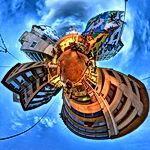
Sony a6300 4k
teddoman reacted to Epoca Libera for a topic
About firmware update ILCE6300 V1.10 : updates that are not described in the release note and probably Sony does not like to speak about: What I describe here affects the camera when used together with a: Auto-Focus Mount Adapter EF-NEX for Canon EF lenses to Sony NEX Mount and/or b: speedbooster (in green mode). 1.Camera set at : Movie mode and setting: movie/hfr>aperture priority Supposing you have a lens with f=2,8 on the adapter. a. Firmware v1.00 (previous): While you turn the dial knob to set the aperture (e.g. at desired f=11) you read the desired value on the screen but in fact the aperture will stay at 2,8. It will be really set at the moment you press the REC button (and you will hear the slight noise of the aperture blades). So there is no way to have depth of field preview. b. Firmware v1.10 (new): While you turn the dial knob to set the aperture (e.g. at desired f=11) the aperture blades are set real time. So before you press the REC button, you have depth of field preview. So with the new firmware there is a different way in handling the aperture during movie mode: The real aperture value is now set before you press the REC button. 2. On my previous comment on March 2016 at the link: http://www.eoshd.com/comments/topic/19110-sony-a6300-4k/?do=findComment&comment=137969 I describe a firmware V1.00 bug that: PAL switched to NTSC a6300 camera would not set the correct aperture on 24p movie modes. This bug was fixed with the new firmware. Hope my notes will help some people.1 point

